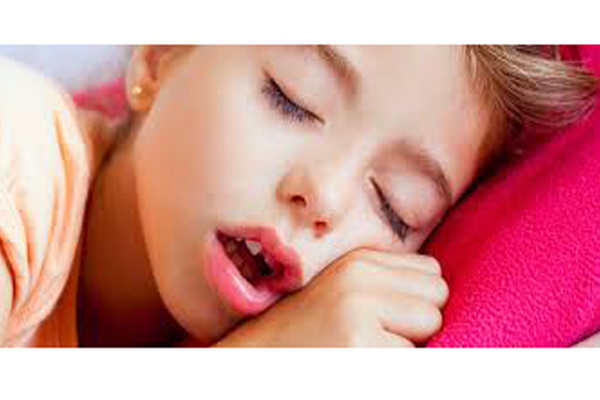Snoring in children : A wake up call
Unlike Adults Snoring is also common in children about 10 -15% of children snores regularly &this snoring can be a symptom of more serious underlying problem of obstructive sleep apnea.As about 2-5 % of pediatric population have sleep apnea.Obstructive sleep apnea in children can contribute to problems ranging from bed wetting to poor mental and physical well being.
Sleep apnea in children
It is obstruction of airway in nose, throat when a child is sleeping his throat muscles get relaxed leading to inadequate air reaching to lungs .In some children especially with enlarged adenoids and tonsils the relaxed muscles causes narrowing with reduced airflow. This causes snoring and irregular breathing.
Causes
Most common cause of snoring in children is enlarged tonsils and adenoids.Another factors like anatomical component, such as a small jaw or a small airway also play a significant role. Rarely there is possibility that the muscles and the nerves controlling muscles of throat are not well integrated during sleep and therefore do not open the airway enough causing snoring and sleep apnea in children.
Risk Factors
- Obesity is the predominant risk factor. While sleeping mass of fat in neck, puts even more pressure on tissues that are already relaxed, and makes the pharynx, or airway, even smaller.
- Children with Down syndrome
- Children who have significant hypotonia – that means that their muscles are relatively very weak
- children who have neuromuscular diseases in children
- Allergies causes substantial swelling of the lining of the nose, and that can lead to enlargement of adenoids, and altogether this makes it more likely that a child will have difficulty breathing through their nose.
- Some kids who are asthmatic, obviously, can have sleep apnea.
- However, in children whose parents smoke, we see a major risk factor for snoring.
Consequences of sleep apnea in children
Social: Loud snoring can become a significant social problem if a child shares a room with siblings or at sleepovers and summer camp.
Behaviour and learning: Children have unrefreshing sleep, become moody, inattentive, hyperactive and disruptive both at home and at school. They start fighting with everybody, and then finally they crash. Dr Manish Goyal have seen that a substantial number of children who are diagnosed with hyperactivity disorder have sleep apnea, and if you treat the sleep disordered breathing their hyperactivity disappears.
If your child don’t sleep well at night and his brain does not receive enough oxygen, he may start losing brain cells. So during a period of brain development, the cognitive abilities of the children are affected
Dr. Manish Goyal found in his patients that children who were not doing well in school were much more likely to have sleep apnea than normal children. We also found that if you treated those children for their sleep apnea, their grades came up and if you don’t treat sleep apnea early enough, then the brain has suffered and this could be an irreversible loss. In other words, children may not be able to compensate, and therefore lose IQ points, for example, that they will never recover.
Enuresis: Sleep apnea causes increased night-time urine production, which may lead to bedwetting.
Growth: Children with sleep apnea may not produce enough growth hormone, resulting in abnormally slow growth and development.
Obesity: sleep apnea may cause the body to have increased resistance to insulin or daytime fatigue with decreases in physical activity. These factors can contribute to obesity.
Cardiovascular: OSA can be associated with an increased risk of high blood pressure or other heart and lung problems.
HOW IS SLEEP APNEA DIAGNOSED?
Sleep apnea in children should be considered if frequent loud snoring, gasping, snorting, and thrashing in bed or unexplained bedwetting is observed. Behavioural symptoms can include changes in mood, misbehaviour, and poor school performance. Not every child with academic or behavioural issues will have sleep apnea , but if a child snores loudly on a regular basis and is experiencing mood, behaviour, or school performance problems, sleep disordered breathing or sleep apnea should be considered. If you notice that your child has any of those symptoms, have them checked by an otolaryngologist (ear, nose and throat doctor). Sometimes physicians will make a diagnosis of sleep disordered breathing based on history and physical examination. In other cases, such as in children suspected of having severe OSA due to craniofacial syndromes, morbid obesity, or neuromuscular disorders or for children less than 3 years of age, additional testing such as a home based sleep test or polysomnography may be recommended.
TREATMENT FOR SLEEP APNEA
Enlarged tonsils and adenoids are a common cause for sleep apnea. Surgical removal of the tonsils and adenoids (T&A) is generally considered the first line treatment for paediatric sleep disordered breathing if the symptoms are significant and the tonsils and adenoids are enlarged. Most of paediatric T&A procedures performed by Dr Manish Goyal each year, the majority are currently being done to treat sleep disordered breathing . Most children with sleep apnea show both short and long- term improvement in their sleep and behaviour after T & A.
Not every child with snoring should undergo T&A as the procedure does have risks according to Dr Manish Goyal. He thinks that potential problems can include anaesthesia or airway complications, bleeding, infection and problems with speech and swallowing. If sleep apnea symptoms are mild or intermittent, academic performance and behaviour is not an issue, the tonsils are small, or the child is near puberty (tonsils and adenoids often shrink at puberty), it may be recommended that a child with sleep apnea be watched conservatively and treated surgically only if symptoms worsen. children with persistent symptoms or increased risk factors for persistent apnea after T & A such as obesity, craniofacial anomalies or neuromuscular problems. Additional treatments such as weight loss, the use of Continuous Positive Airway Pressure (CPAP) or additional surgical procedures may sometimes be required.
 +919979891672
+919979891672 










